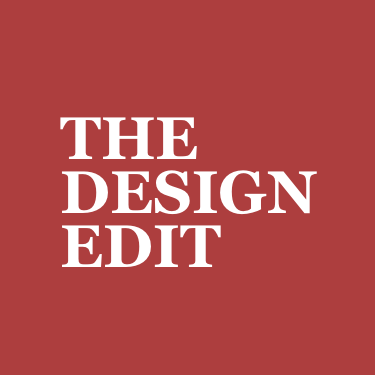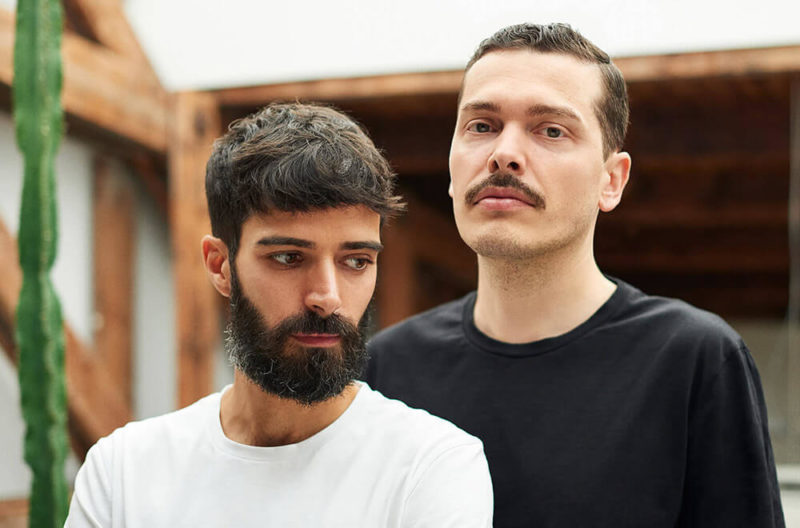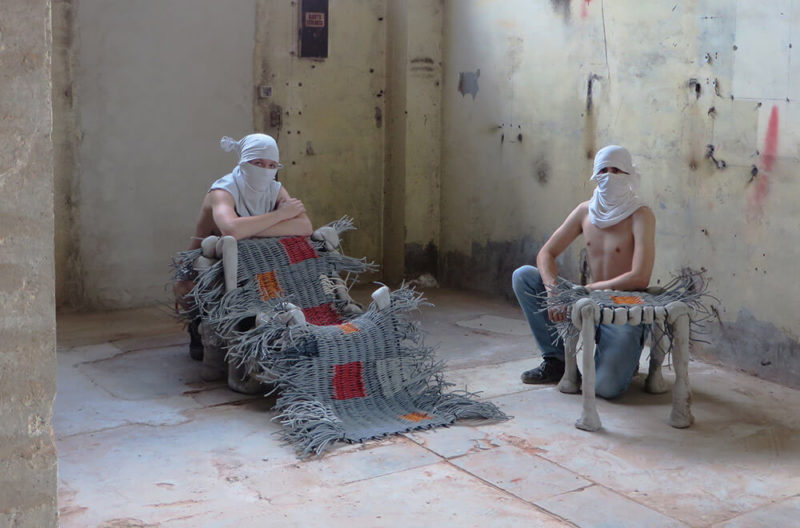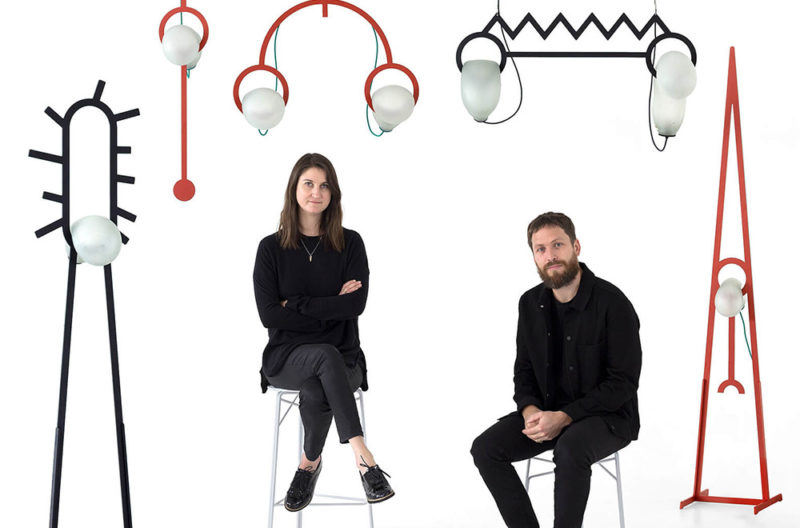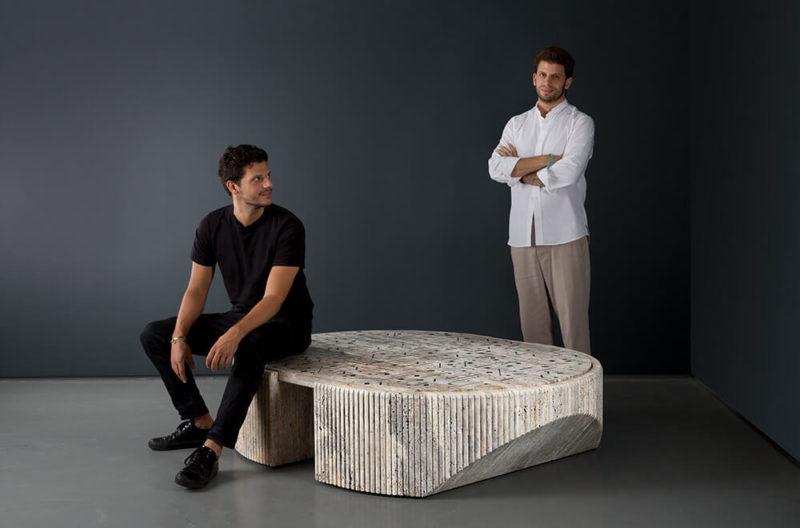Design Duos / Random International
Fusing technology, design and sculpture.
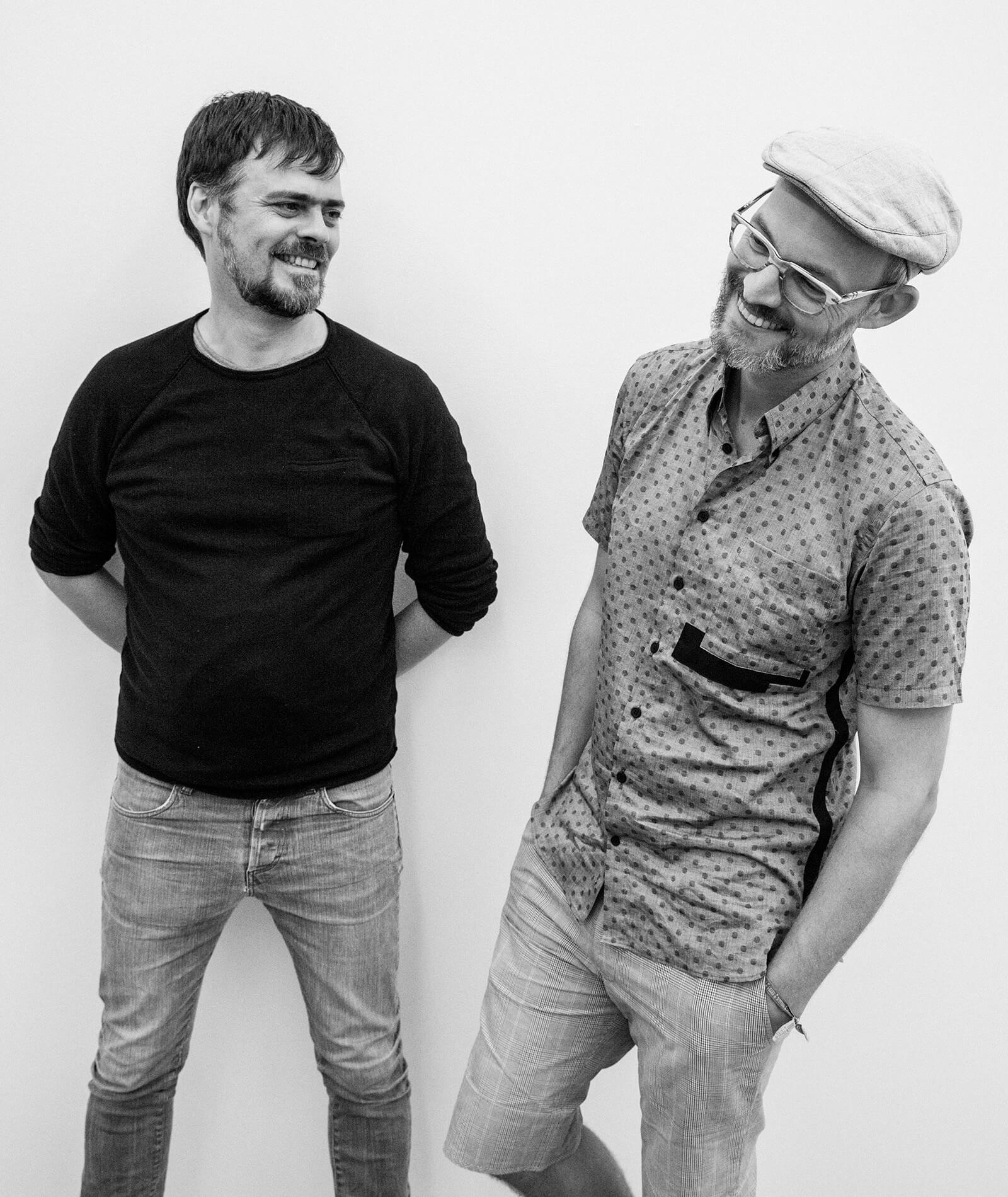
Hannes Koch (left) and Florian Ortkrass (right) of Random International
COURTESY: Random International / PHOTOGRAPH: Mark Davies
RANDOM INTERNATIONAL WAS founded in 2005, a studio born from the synergy between two German designers – Hannes Koch and Florian Ortkrass – who found themselves studying together at Brunel University London. They launched their first official collaboration – the Temporary Light Printing Machine, PixelRoller and Temporary Graffiti – at Scope Miami in 2006 and since then have deeply mined a strand of digital computer-based kinetic art focused on our human relationship with the technologies we have invented. Their spectacular and complex installations – such as ‘Swarm Study / I’, 2010 and ‘Rain Room’ – run alongside collaborations with British choreographer Wayne McGregor. Like him, they share a fascination with human consciousness and the desire to show us to ourselves through the most sensorily compelling and sophisticated technological means.
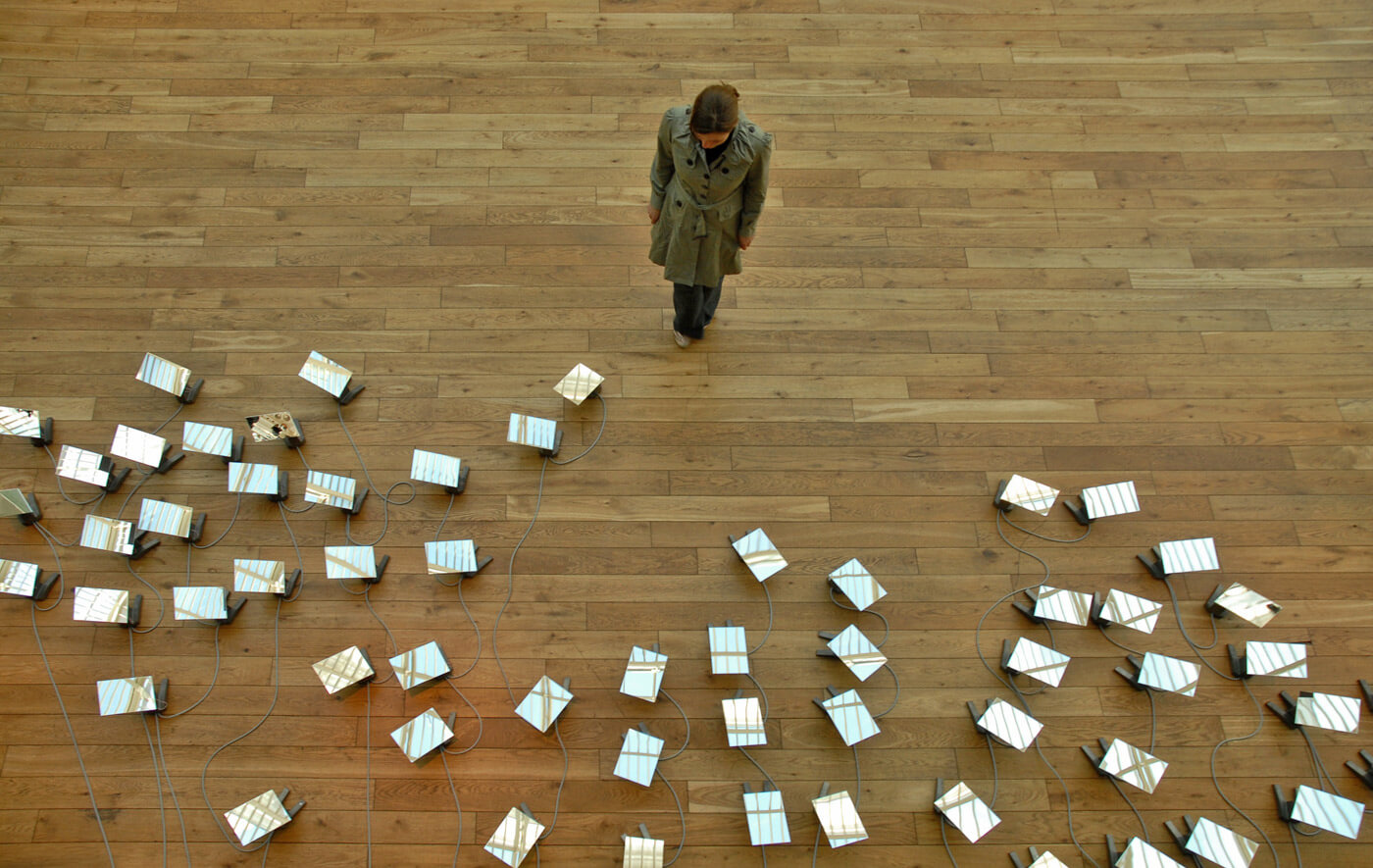
Random International, ‘Audience’, 2008, Royal Opera House
COURTESY: Random International
The Design Edit (TDE): How did you meet?
Random International (RI): We met at Brunel University, in Runnymede (outside London), in the first weeks, on the football pitch behind the student accommodation. It was clear that everyone else was weird and we were the only Germans (!). We had both done different things before – Flo had had a full education as a carpenter, and I had worked for two years in a psychiatric unit – so we were a few years older. They had lured us in with this promise that Brunel was the new Bauhaus and super creative, but the course was more of a basic foundation in engineering. It did a good thing: it got any desire to work as product designers out of our system. We then went to the Royal College of Art, which, with Ron Arad as the head of Design Products and with tutors like Tony Dunne and Gabriel Klasmer, was the high point of creative freedom. The logical progression was then to set up Random International and work as artists – to squeeze out the design and use it to make art.
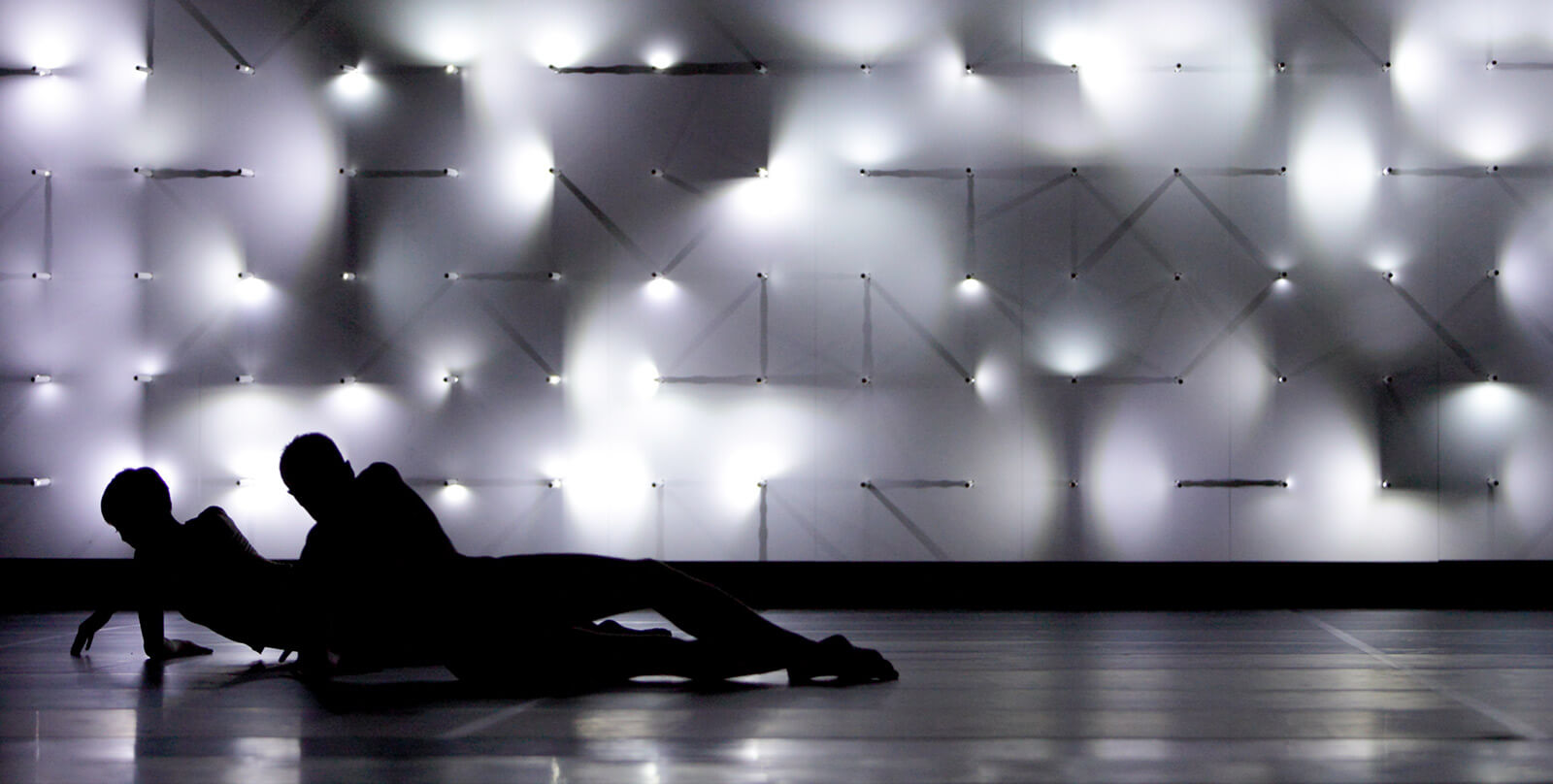
Random International, ‘Far’, 2010
COURTESY: Random International
TDE: What drew you to work with each other?
Hannes Koch: We had already developed a mutually supportive way of working at Brunel. We knew what we wanted, and were very complementary. I learned a lot from Flo on a practical level and we learned endlessly through discussing work together. The close confinement and the temporary celibacy were the perfect breeding ground for workaholism – we worked until 4am! As we came towards the end of the degree we worked on more public-facing projects (Milan and the Valencia Biennial), but also we designed pepper mills for fellow students and we took on designing concept work for Audi … so we came up with the name, Random International. We took that name to the RCA, but we did not officially found the studio until 2005. Part of the success of the partnership is that we knew there was real mutual benefit – not desperation – driving us, as we had had our own successes with our personal work.
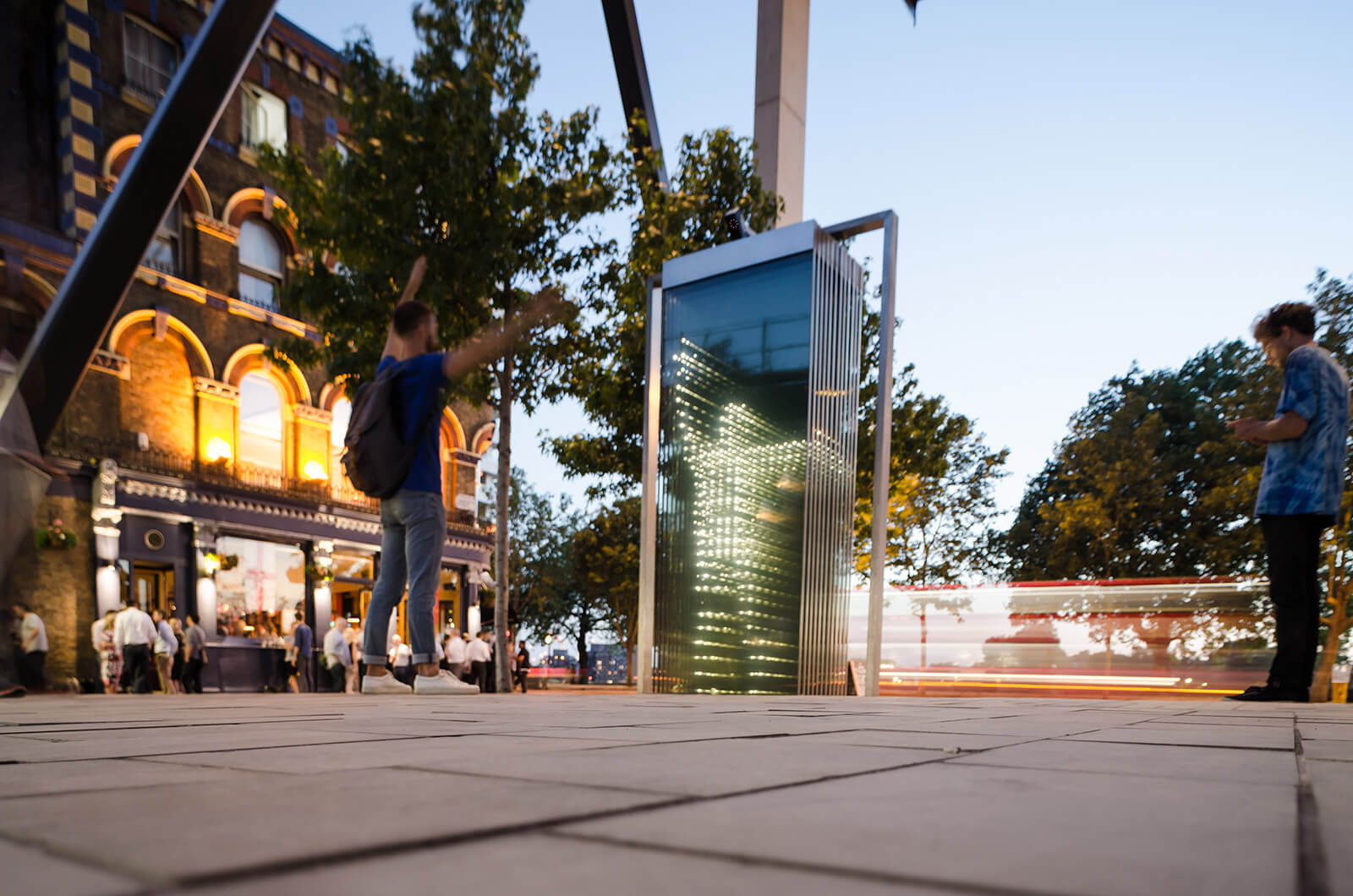
Random International, ‘Self and Other’, 2018, Albert Embankment
COURTESY: Random International
TDE: How has your combined output evolved?
Hannes Koch: We went to Scope Art Fair in Miami in 2006 with some kinetic art. It was a good place to launch ourselves. We saw that that was what we wanted to do: to make work for an exhibition and be paid for it.
Florian Ortkrass: That certainly helped with exposure. But our output is always evolving– we are always looking at the next thing.
Hannes Koch: One significant milestone was joining Carpenters Workshop Gallery in 2008 as they supported us in making two kinetic works for Design Miami in 2009. That really focused the practice. We had done some exhibition design to pay the bills but that really suggested that we could work as artists. ‘Rain Room’ in 2012 at the Barbican was really significant. Our mission is to hammer what we do into mainstream contemporary art. I hope that we are successfully normalising this way of making sculpture using different materials. Another key thing was joining Pace. We are committed to both galleries, with different artworks.
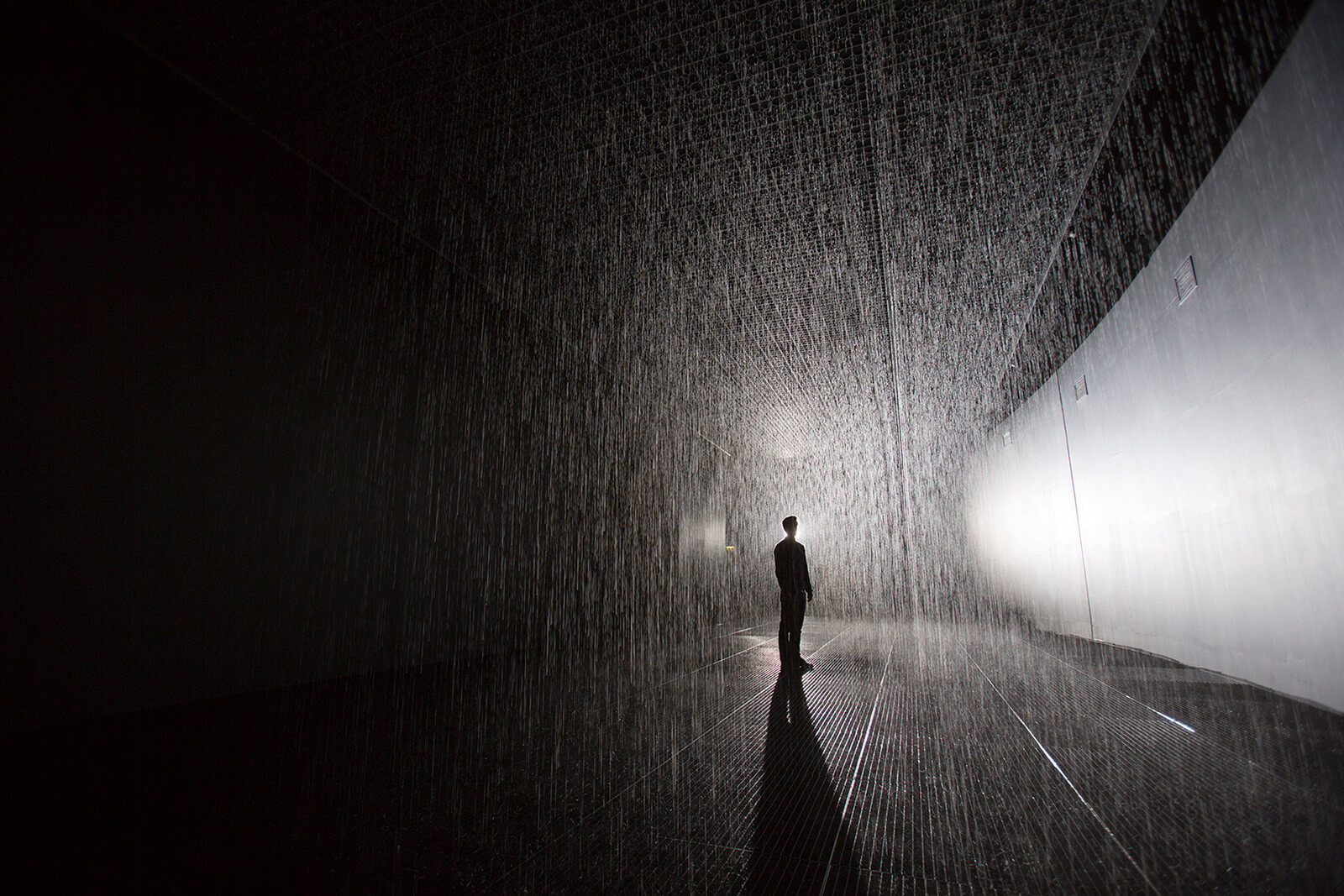
Random International, ‘Rain Room’, 2012
COURTESY: Random International
TDE: How do you work creatively? Do you split the work, do your skills overlap and complement, or are you polar opposites?
Florian Ortkrass: Hannes is really good at a proposal, focusing our thoughts at the beginning. Those initial steps are galvanising. I am good at taking that proposal and making something we can visualise, which we can then start to work from. But we are both really interested in both the “how” and the “why” of the work.
Hannes Koch: I think conversation is really important – it’s like ping pong. We have learned to leave enough space to allow unexpected things to happen. In some ways we are very symbiotic: Flo is incredibly explorative in terms of building objects and developing their visual qualities; I am more about the internal editing process.
Florian Ortkrass: We also have a large team of technologists and programmers – they enrich, criticise and purify our ideas and intent and execute them to an incredible degree of functionality. It was insane to go to Australia in February and see ‘Rain Room’ installed in the Jackalope Pavilion in Melbourne.
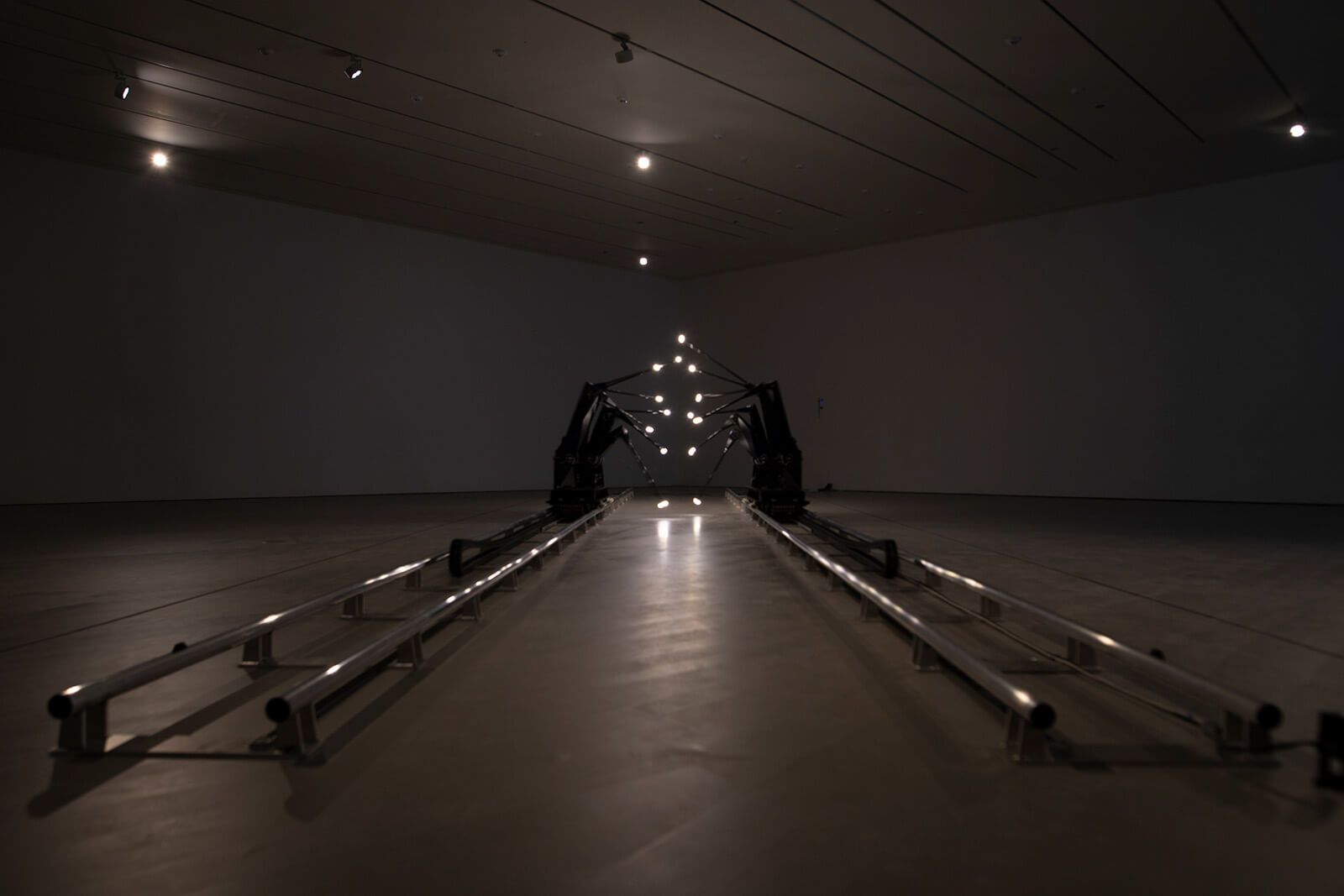
Random International, ‘Fifteen Points’, 2019
COURTESY: Random International
TDE: How do you deal with conflicts or tensions?
Florian Ortkrass: They are not the best moments, although they usually come from a desire to make things better. I think with conflicts the most important thing is to resolve them or use them for growth. So far that’s always worked!
Hannes Koch: When things are really good, we reach agreement on them quickly … but sometimes we just have to wait for the technology – or the money – to catch up with our ambition.
TDE: Are two heads better than one?
Hannes Koch: It can be a disadvantage sometimes that you talk too long and don’t take chances. When we do decide to do something it triggers a period of lengthy, resource-heavy development, so we have to be careful what we wish for. But then the flights of fancy deserve to get shot down – they can easily become meaningless one-offs – so the process of editing is important. The last twelve years have been pretty intense, so it is good for us to edit heavily to keep up the quality. And you learn to defend your ideas.
Florian Ortkrass: For me, the “why” is very important – not being strictly speaking designers, not being responsible for another million plastic objects, we still have to defend what we are doing to each other and to the world.
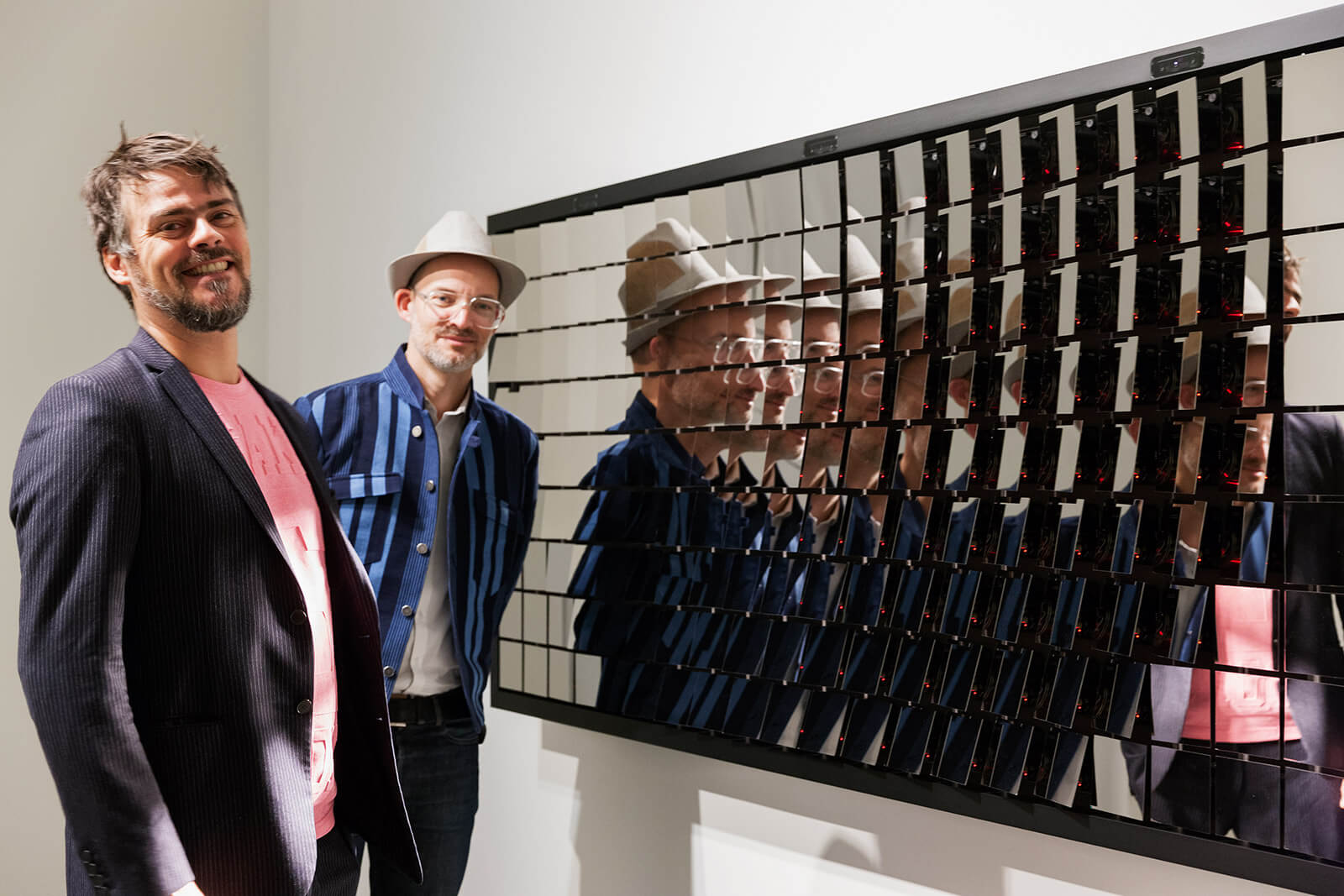
Hannes Koch (left) and Florian Ortkrass (right) with ‘Fragments’, 2016
COURTESY: Random International
TDE: What are you up to now and in the immediate future?
Random International: We are working on a couple of commissioned projects for Carpenters Workshop Gallery and Pace and we have started production for a solo show in Taiwan. We are working on our first large-scale kinetic public outdoor project in Boston, which was meant to open in the autumn, and we are doing a project with Hedwig’s team over at BMW Culture Group, where we will show the evolution of a new sculpture through choreography, in collaboration with the British choreographer Wayne McGregor. We have collaborated with McGregor for about the last 12 years. There is a real affinity between his interest in neuroscience and new technologies in relation to the skills and purity of the human body, and our intention to create art that highlights awareness of the human in relation to technology. We are meant to be going into pre-production with Wayne in September.
Random International, ‘Kinds of Life’ at the Zayed Centre, Great Ormond St Hospital for Children, 2019
COURTESY: Random International
Random International – a collaborative studio for experimental practice within contemporary art.
